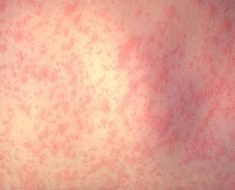Individuals with severe Tourette syndrome or chronic tic disorder (TS/CTD) are at increased risk for cervical spine disorders and related neurological conditions, new research suggests.
In a study of almost 6800 children and adults with TS/CTD compared with almost 68,000 matched individuals from the general population, results showed that those with TS/CTD had a 39% higher chance of developing a cervical spine disorder.
In addition, the researchers found a 57% higher risk for vascular disorders, such as cervical arterial dissections and cerebrovascular lesions, and a 38% increased risk for nonvascular spine disorders in those with TS/CTD — even after controlling for other known causes of cervical spine disorders.
“Although these outcomes are rare in the general population, our take-home message to practicing specialists in psychiatry and movement disorder specialists is to be aware of these severe outcomes in this patient population,” lead author Josef Isung, MD, PhD, Division of Psychiatry, Department of Clinical Neuroscience, Karolinska Institute, Stockholm, Sweden, told Medscape Medical News.
“Close monitoring of individuals at risk, especially those with known severe head- and neck-jerking tics, is thus warranted to facilitate early specialized interventions when necessary,” Isung said.
The findings were published online August 23 in JAMA Neurology.
Unique Opportunity
“Our study was motivated from all the previous case reports from colleagues around the world describing very severe neck events, such as cervical spine fractures, nerve involvement with limb paralysis, and even cerebrovascular lesions among patients with TS/CTD,” Isung reported.
However, it is not known whether these anecdotal reports represent isolated cases or a more common phenomenon among individuals with TS/CTD, he added.
The researchers decided to investigate the issue by turning to Swedish registers. They examined records for all individuals with a recorded diagnosis of TS/CTD at age 3 or older, were born between 1973 and 2013, and were living in Sweden between 1997 and 2013.
For each individual with TS/CTD (n = 6791; 77.1% men; median age at first diagnosis, 15.6 years), 10 randomly selected individuals from the general population who were free from a diagnosis of TS/CTD were selected and matched by sex, birth year, and country of birth. The median length of follow-up for both groups was 17 years.
Isung said these registers offered “a unique opportunity to assess the prevalence and nature of these types of outcomes nationwide, and thus, have better descriptions of how common this association might be.”
Moreover, “by using Swedish registers we also had the opportunity to control for important covariates that also are known to be associated with cervical spine disorders,” he said.
The investigators collected information about cervical vascular diagnoses, such as aneurysm and dissection of an artery, cerebral infarction, and transitory cerebral ischemia not otherwise specified; as well as cervical nonvascular diagnoses, such as spondylosis, cervical disc disorders, fractures and distortions of the cervical spine, and cervicalgia.
The researchers also included information drawn from records of surgical spine procedures.
In addition, they controlled for covariates including rheumatic disorders, traffic injuries, and fall- and sports-related injuries, as well as attention-deficit/hyperactivity disorder (ADHD) comorbidity.
Persistent Disability
In the TS/CTD group, 3.5% had at least one diagnosis of a cervical spine disorder during the follow-up period versus 2.2% of the matched control group. This corresponded with a 39% increased risk in the fully adjusted model.
There was also a significantly high risk for vascular (adjusted hazard ratio [aHR], 1.57; 95% CI, 1.16 – 2.13) and nonvascular cervical disorders (aHR, 1.38; 95% CI, 1.19 – 1.60) in those with TS/CTD compared with their matched peers
Results from a fully adjusted model excluding those with a diagnosis of ADHD from both cohorts yielded “largely unchanged” outcomes.
When the researchers stratified the cohorts by sex, they found a similar risk of any cervical spine disorder among men and women (aHR, 1.39; 95% CI, 1.18 – 1.63 vs aHR, 1.41; 95% CI, 1.11 – 1.79, respectively).
However, among men the risk was higher for vascular than for nonvascular disorders, while the difference among women was not significant. On the other hand, the risk for nonvascular outcomes among women was significant.
“Importantly, in our study, we controlled for other known causes of cervical spine disorders, including rheumatic disorders, traffic accidents, fall- or sport-related injuries, and ADHD comorbidity, and thus we could conclude that individuals with TS/CTD are at increased risk of cervical spine disorders including outcomes that may lead to persistent disability,” Isung said.
The mechanism behind the risk is believed to be “a direct relation between forceful motor tics involving the neck region, resulting in a mechanical tear of spinal elements that, in the most severe outcomes, could lead to fractures, compromised space for spinal nerves leading to radiculopathy/myelopathy, and dissection of cervical vessels adjacent to the cervical spine,” he noted.
He added that although TS/CTD itself is rare, motor tics involving the neck are among the most common tics among affected individuals.
“It is also important to consider that other mechanisms may be involved, such as accidents or deliberate self-injurious behavior,” Isung said.
“Malignant Tourette”
Commenting on the findings for Medscape Medical News, Joseph Jankovic, MD, professor of neurology and distinguished chair in movement disorders, Department of Neurology, Baylor College of Medicine, Houston, Texas, called the study “very timely, as there is a huge unmet need to educate healthcare providers and the general public about the many misconceptions about TS.”
One of these misconceptions is that TS is a “rare psychiatric disorder,” which “could not be further from the truth,” said Jankovic, who was not involved with the research.
Although many patients with TS have relatively mild symptoms, “there are some that have very troublesome tics that may be quite disabling and may lead to self-injurious behavior,” he noted.
Jankovic added that the current study cites the research of his group, in which they attempted to draw attention to cases he characterized as “malignant Tourette.”
Many such patients “had very serious self-injurious tics and behaviors, including self-bruising, self-biting, and even self-evisceration,” he said. In addition, some of his patients experience what he calls “whiplash tics,” meaning repetitive, violent head/neck jerking movements that can cause secondary spine changes and compressive myelopathy.
“I view this as a medical emergency and take an aggressive approach toward treatment,” Jankovic said.
The current investigators note that these disorders, while rare, may appear early in mid-childhood, “highlighting the importance of increasing awareness of a potentially serious complication of severe motor tics.”
Isung and Jankovic have reported no relevant financial relationships. Disclosures for the other authors are listed in the article.
JAMA Neurol. Published online August 23, 2021. Abstract
For more Medscape Neurology news, join us on Facebook and Twitter.
Source: Read Full Article





